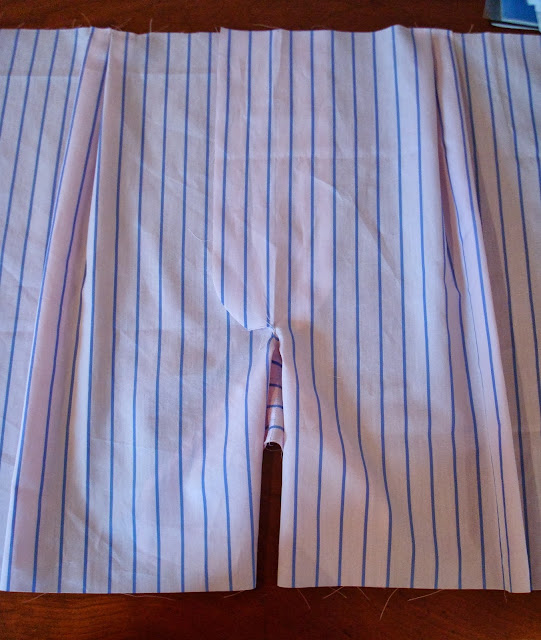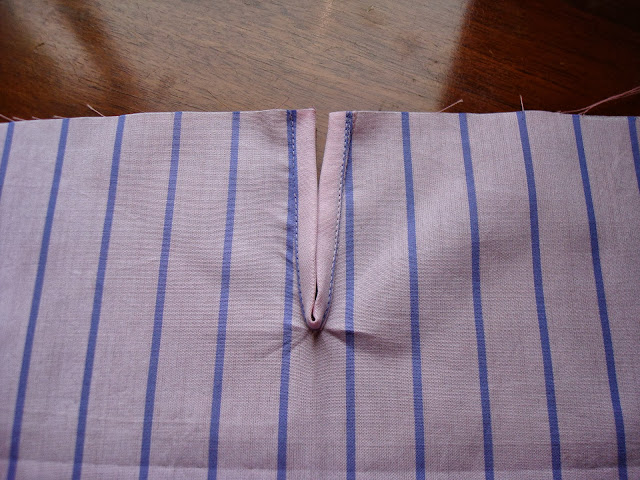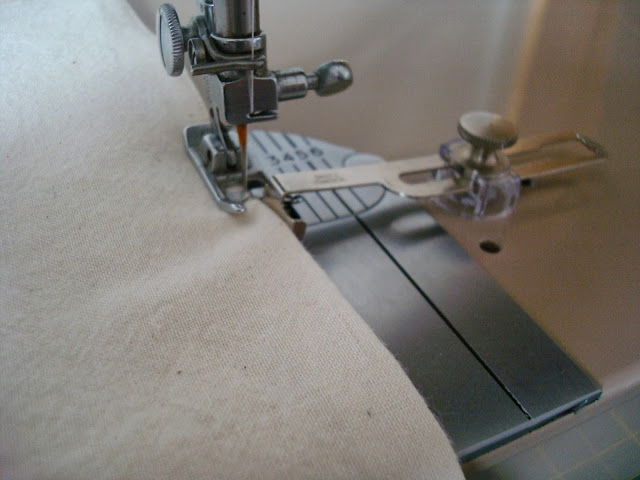A few months ago The Much Belovéd arrived home with two new pairs of trousers both of them of the long unfinished hem variety.
"Would you be able to shorten these for me please?" he asked.
"Yes of course darling. I would be delighted to help you with that." I replied knowing full well that I have never pinned or hemmed expensive wool trousers before in my life. The last time TMB got a tailor to do this for him I was less than complimentary about the outcome so let us just say that failure, on this occasion, would not be an option.
I have restitched the hems of my own trousers on the odd occasion when then have needed repair but I have never tackled the whole job from scratch and I knew I was going to need to top notch guidance on exactly what to do.
I turned to my copy of Roberto Cabrera and Patricia Flaherty Meyers, 'Classic Tailoring Techniques: A Construction Guide for Women's Wear', (New York 1984). This may seem an odd choice as I was altering gent's trousers but at the time I wanted to buy Cabrera's book the Menswear version was rather hard and or expensive to track down. It was republished towards the middle of last year so I now have a copy of both. The instructions are concise but clear and equally applicable to trousers worn by men or women.
I had TMB try the trousers on with a pair of shoes and pinned up the legs so that the hem reached roughy the middle of the back of his shoe and broke gently on the instep at the front. Cabrera and I both agree that this is the right length for trousers some modern retailers disagree and favour the concertina look! I got him to walk around a bit, look in the mirror and try sitting down to get his approval on the length before he took the trousers off again.
The next step was to mark the fold of the hem on the right side using chalk. Wow! Chalk really works much better on wool flannel than it does on cotton poplin. The amount left was obviously far too much to turn under as a hem I would have to cut some of the fabric away.
So I chalked another line about two inches below...
Took a deep breath and chopped. I was VERY nervous about cutting into these but needs must. I didn't really like the way that my nice clean cut edge began to fray so quickly. Maybe I should have used the pinking shears but I hadn't so there you go. I used the scraps to trial a machine zigzag to finish the raw edge but I didn't like the outcome.
I opted instead for something decidedly more old school. Over casting the edge by hand. This is a technique I had seen in an online reproduction of a very old leaflet on seam finishes. It took a bit of time but it sewing by hand without a deadline is very therapeutic, especially when the daylight is good.
I turned the trouser leg inside out and pinned the hem back up along the chalked fold line.
And then tacked the the hem up keeping the stitches about an inch down from the top of the hem. A really great tip is to insert a piece of cardboard into the trouser leg to stop yourself from tacking one side of the leg right through to the other. I used part of a cereal box.
Then I turned the trousers right side out again and steam pressed the hem flat - nice!
Then I stitched the hems by hand trying to keep my stitches small enough to be invisible and loose enough not to pucker. The result was perhaps not the work of a master tailor but I was satisfied and even better than that so was the prospective wearer. On balance I really enjoyed the challenge. Working with wool was a nice change and I am sore tempted to set to and sew myself a pair of tailored trousers sometime during 2016.

















































